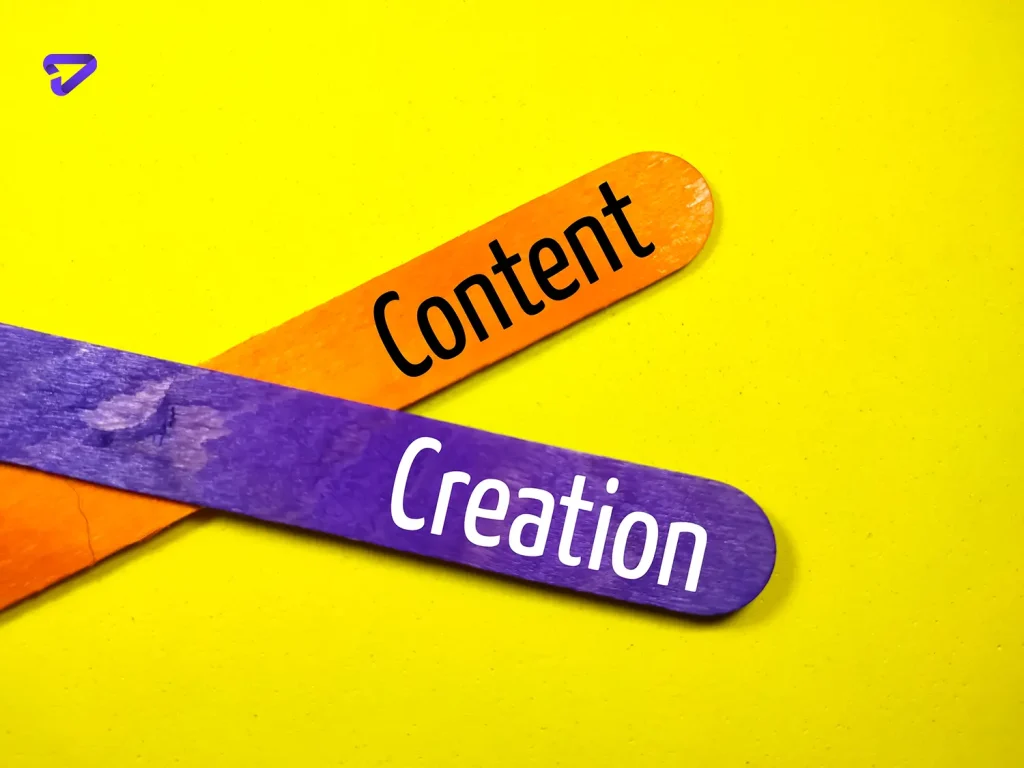
How to Create a Winning Content Marketing Plan for Your Business
content marketing plan is essential for driving brand awareness, engaging target audiences, and converting prospects into loyal customers through strategic content creation services and distribution.
In today’s digital age, content marketing has become a crucial component of any successful business strategy.
Whether you’re a small startup or a well-established enterprise, creating valuable and engaging content can help you attract and retain customers, establish brand authority, and ultimately drive sales.
But developing an effective content marketing plan is no easy feat. It requires careful planning, strategic execution, and continuous optimization.
Imagine you’re a chef preparing a gourmet meal for a discerning audience.
Just as you carefully select the finest ingredients, meticulously follow the recipe, and artfully plate the dish, creating a winning content marketing plan demands a similar level of attention to detail and creativity.
In this comprehensive guide, we’ll explore the essential ingredients and steps needed to craft a content marketing plan that tantalizes your target audience and leaves them craving more.
When developing a content marketing plan, the best you need to know about content writing includes creating compelling, audience-focused content that drives engagement and supports your overall marketing goals.
Understand Your Target Audience
Before you can create compelling content, you need to have a deep understanding of your target audience.
Who are they? What are their interests, pain points, and goals? What kind of content resonates with them?
By answering these questions, you’ll be better equipped to tailor your content strategy to their specific needs and preferences.
According to a HubSpot study, 76% of consumers prefer different content formats at different stages of the buyer’s journey.
This highlights the importance of understanding your audience’s preferences and tailoring your content accordingly.
To gain insights into your target audience, consider the following strategies:
Create buyer personas: Develop detailed profiles of your ideal customers, including their demographics, behaviors, motivations, and challenges.
Conduct market research: Gather data through surveys, focus groups, and social media listening to understand your audience’s preferences and pain points.
Analyze website analytics: Study your website’s traffic sources, popular pages, and user behavior to identify content that resonates with your audience.
Monitor social media conversations: Listen to what your audience is saying on social media platforms to uncover their interests and concerns.
By truly understanding your target audience, you’ll be better equipped to create content that resonates, engages, and ultimately drives conversions.

Define Your Content Marketing Goals
Before you start creating content, you need to clearly define your content marketing goals.
Are you looking to increase brand awareness, drive website traffic, generate leads, or boost sales?
Your goals will shape the type of content you create, the channels you use, and the metrics you track.
Here are some common content marketing goals to consider:
Increase brand awareness: By creating informative and entertaining content, you can increase your brand’s visibility and reach new audiences.
Drive website traffic: High-quality, SEO-optimized content can help attract more visitors to your website, increasing your chances of converting them into customers.
Generate leads: By offering valuable content in exchange for contact information, you can build a pipeline of potential customers.
Boost sales: Through persuasive and educational content, you can nurture leads and guide them through the buyer’s journey, ultimately driving sales.
Once you’ve identified your goals, it’s important to align them with your overall business objectives and ensure that they are specific, measurable, attainable, relevant, and time-bound (SMART).
Conduct a Content Audit
Before you start creating new content, it’s essential to assess your existing content assets.
A content audit will help you identify gaps, repurpose successful content, and eliminate redundant or outdated materials.
Here’s how to conduct a comprehensive content audit:
Inventory all your content: Create a spreadsheet or use a content management system to catalog all your existing content assets, including blog posts, videos, whitepapers, case studies, and social media posts.
Analyze performance metrics: Evaluate the performance of each piece of content based on metrics such as pageviews, engagement, lead generation, and conversions.
This will help you identify your top-performing content and the areas that need improvement.
Assess content quality: Review the quality of your content, considering factors such as relevance, accuracy, and readability.
Identify content that needs to be updated, refreshed, or retired.
Identify content gaps: Look for gaps in your content strategy and determine what topics, formats, or audience segments you’re not effectively addressing.
Develop a content optimization plan: Based on your findings, create a plan to update, repurpose, or retire existing content, and identify opportunities for new content creation.
By conducting a thorough content audit, you’ll be able to streamline your content efforts, maximize the impact of your existing assets, and identify areas for improvement and new opportunities.

Develop a Content Strategy
With a deep understanding of your target audience, defined goals, and a comprehensive content audit in hand, you’re ready to develop a strategic content plan.
This plan should outline the types of content you’ll create, the topics you’ll cover, and the channels you’ll use to distribute your content.
for more and best of the guide to creating a plan, read the semrush marketing strategy for content creation.
Here are some key elements to consider when developing your content strategy:
Content Types and Formats
Determine the types of content that will best resonate with your audience and align with your goals.
Common content formats include:
Blog posts: Informative, educational, or entertaining articles that showcase your expertise and engage your audience.
Videos: Engaging visuals that can explain complex topics, showcase products, or share customer stories.
Infographics: Visual representations of data and information that are easy to consume and share.
Whitepapers and eBooks: In-depth, educational resources that position your brand as a thought leader.
Podcasts: Audio content that allows for storytelling and in-depth discussions with industry experts.
Social media posts: Bite-sized content that engages your audience and promotes your other content assets.
Content Topics and Themes
Identify the topics and themes that are most relevant to your target audience and align with your business objectives.
Consider covering industry trends, product or service information, customer success stories, and educational resources.
Content Distribution Channels
Determine the channels you’ll use to distribute your content, such as your website, email newsletters, social media platforms, and online communities.
Each channel has its own strengths and audience preferences, so tailor your content accordingly.
Content Production and Promotion Plan
Develop a content production schedule that outlines when and how often you’ll create and publish new content.
Additionally, create a promotion plan that includes tactics for amplifying your content’s reach through social media, email marketing, influencer partnerships, and paid advertising.
Key Performance Indicators (KPIs)
Define the metrics you’ll use to measure the success of your content marketing efforts.
Common KPIs include website traffic, engagement rates, lead generation, and conversions.
Regularly monitoring and analyzing these metrics will help you optimize your strategy and ensure you’re achieving your goals.
By developing a comprehensive content strategy, you’ll be able to create a cohesive and effective plan that aligns with your business objectives and resonates with your target audience.

Create Compelling Content
With your content strategy in place, it’s time to start creating compelling content that engages and delights your audience.
Here are some best practices to follow:
Storytelling and Emotional Connections
People are more likely to engage with and remember content that tells a compelling story and evokes emotions.
Incorporate storytelling techniques, such as character development, conflict, and resolution, to make your content more relatable and memorable.
For example, instead of just listing the features of your product, share a customer success story that highlights how your product solved their specific problem and improved their life or business.
Never Underestimate Multimedia
Incorporate a variety of multimedia elements, such as images, videos, infographics, and audio, to make your content more engaging and visually appealing.
Different people prefer consuming information in different formats, so offering a multimedia experience can cater to diverse preferences.
Optimize for Search Engines
While creating content for your audience should be your top priority, it’s also important to optimize your content for search engines.
Conduct keyword research, implement on-page SEO best practices, and ensure your content is easily discoverable by your target audience.
Encourage Engagement and Sharing
Include calls-to-action (CTAs) that encourage your audience to engage with your content, such as leaving comments, sharing on social media, or subscribing to your email list.
This not only helps foster a community around your brand but also increases the reach and visibility of your content.
Ensure Quality and Accuracy
Above all, prioritize quality and accuracy in your content creation.
Thoroughly research your topics, fact-check your information, and ensure your content is well-written, free of errors, and adheres to industry best practices and ethical standards.
By creating compelling, engaging, and high-quality content, you’ll not only attract and retain your target audience but also establish your brand as a trusted authority in your industry.
Promote and Distribute Your Content
Creating great content is only half the battle; you also need to effectively promote and distribute it to ensure it reaches your target audience.
Here are some strategies to consider:
Social Media Promotion
Leverage the power of social media platforms to amplify the reach of your content.
Share your content on relevant platforms, engage with your audience, and consider running social media ads to boost visibility and drive traffic to your content.
According to a Semrush study, businesses that prioritize social media content strategy see a 92% increase in brand awareness, a 51% increase in website traffic, and a 33% increase in lead generation.
Email Marketing
Build an email list of subscribers interested in your content and industry.
Send regular newsletters or content updates to keep your audience engaged and drive traffic back to your website or blog.
Influencer Partnerships
Collaborate with influencers or thought leaders in your industry to amplify your content’s reach and tap into their engaged audiences.
Co-creating content, guest blogging, or having influencers share your content can help you reach new audiences and build credibility.
Content Syndication
Consider syndicating your content on third-party platforms, such as industry publications, content hubs, or content discovery networks.
This can expose your content to new audiences and drive traffic back to your website.
Paid Advertising
While organic promotion should be your primary focus, consider running targeted paid advertising campaigns on platforms like Google Ads, social media, or industry publications to boost visibility and drive targeted traffic to your high-performing content.
Repurposing and Repromoting
Don’t let your content gather dust after its initial publication.
Repurpose and repromote your evergreen content across different channels and formats to extend its lifespan and reach new audiences.
By implementing a strategic promotion and distribution plan, you’ll ensure that your high-quality content reaches the right audience at the right time, maximizing its impact and driving tangible results for your business.

Measure and Optimize
Continuously measuring and optimizing your content marketing efforts is crucial for long-term success.
Here’s how to approach this process:
Analyze Performance Metrics
Regularly analyze the performance metrics you’ve defined in your content strategy, such as website traffic, engagement rates, lead generation, and conversions.
Look for patterns and insights that can inform your content creation and promotion efforts.
Identify Areas for Improvement
Based on your performance analysis, identify areas where your content marketing efforts are falling short or could be improved.
This could include topics or formats that underperform, distribution channels that aren’t driving desired results, or content assets that need updating or repurposing.
Experiment and Test
Don’t be afraid to experiment and test new content ideas, formats, or promotion strategies.
Continuously iterating and trying new approaches can help you stay ahead of the curve and find what resonates best with your audience.
Refine and Optimize
Use the insights gained from your analysis and experimentation to refine and optimize your content marketing plan.
Adjust your strategy, reallocate resources, and prioritize the tactics and channels that deliver the best results.
Foster a Culture of Learning
Encourage a culture of continuous learning and improvement within your organization.
Stay up-to-date with the latest content marketing trends, best practices, and industry insights.
Attend webinars, conferences, or online courses to keep your team’s skills sharp and ensure your content marketing efforts remain cutting-edge.
By continuously measuring, analyzing, and optimizing your content marketing efforts, you’ll be able to fine-tune your strategy, maximize your return on investment, and stay ahead of the competition in the ever-evolving digital landscape.
Bonus Tips
Leverage User-Generated Content
Encourage your audience to create and share content related to your brand or products.
User-generated content (UGC) can be a powerful way to build trust, foster community engagement, and tap into authentic storytelling.
Share customer reviews, testimonials, social media posts, or even invite your audience to contribute guest posts or videos.
Implement Content Governance
As your content marketing efforts grow, it’s essential to implement content governance practices to ensure consistency, quality, and compliance.
Establish content guidelines, workflows, and approval processes to maintain brand standards and regulatory requirements across all content assets.
Foster Cross-Functional Collaboration
Content marketing is a cross-functional effort that requires collaboration between various teams, such as marketing, sales, product, and customer service.
Foster open communication and collaboration to ensure your content aligns with overall business objectives and provides a seamless customer experience.
Stay Agile and Adaptable
The digital landscape is constantly evolving, and consumer preferences can shift rapidly.
Stay agile and adaptable in your content marketing approach. Be prepared to pivot your strategy based on changes in industry trends, consumer behavior, or new technologies and platforms.
Invest in Content Operations
As your content marketing efforts scale, consider investing in content operations tools and processes to streamline content creation, management, and distribution.
This can include content management systems, workflow automation, content calendars, and analytics platforms.
Prioritize Accessibility and Inclusivity
Ensure your content is accessible to all audiences, including those with disabilities or language barriers.
Implement accessibility best practices, such as closed captions, transcripts, and alt text for images.
Additionally, strive to create inclusive content that represents diverse perspectives and avoids harmful stereotypes or biases.
Content Personalization
Personalized content can significantly improve engagement and conversion rates.
Utilize data and audience segmentation to tailor your content to specific personas, buyer journey stages, or individual preferences.
Personalized content can include dynamic website experiences, targeted email campaigns, or tailored product recommendations.
By incorporating these bonus tips into your content marketing plan, you’ll be able to enhance your audience engagement, maintain brand consistency, stay agile in the face of change, and ultimately drive better results for your business.

Conclusion
Avoid common content marketing mistakes, such as inconsistent posting and lack of clear goals, to ensure your content marketing plan effectively engages your target audience and drives results.
Creating a winning content marketing plan for your business is an ongoing journey, not a one-time destination.
Content marketing helps increase sales by driving targeted traffic and fostering customer loyalty, essential components of a winning content marketing plan.
By understanding your target audience, defining clear goals, conducting a content audit, developing a strategic plan, creating compelling content, promoting and distributing effectively, and continuously measuring and optimizing your efforts, you’ll be well-equipped to engage your audience, establish brand authority, and drive tangible business results.
Remember, content marketing is not a quick fix or a one-size-fits-all solution. It requires patience, dedication, and a commitment to consistently delivering value to your audience.
But when executed effectively, a well-crafted content marketing plan can be a powerful tool for building brand loyalty, generating leads, and ultimately growing your business.
Embrace the process, stay agile, and never stop learning and improving.
With a winning content marketing plan in place, you’ll be well on your way to captivating your audience and achieving your business goals.
Danabak agency can provide you with a customized content marketing plan which is tailored to all of your needs and business goals.
FAQs
How often should I publish new content?
There’s no one-size-fits-all answer, as the ideal publishing frequency depends on your industry, resources, and audience preferences.
However, consistency is key – it’s better to publish high-quality content on a regular cadence than to publish sporadically.
How do I measure the success of my content marketing efforts?
Define key performance indicators (KPIs) that align with your goals, such as website traffic, engagement rates, lead generation, and conversions.
Use analytics tools to track and analyze these metrics, and adjust your strategy accordingly.
Should I focus on creating a lot of content or prioritize quality over quantity?
Quality should always take precedence over quantity.
It’s better to create fewer, high-quality pieces of content that truly resonate with your audience than to produce a large volume of mediocre content.
How do I ensure my content is optimized for search engines?
Conduct keyword research, implement on-page SEO best practices (e.g., optimized titles, meta descriptions, and header tags), and build a strong backlink profile.
Additionally, prioritize creating high-quality, valuable content that naturally attracts links and social shares.
Should I outsource content creation or keep it in-house?
The decision to outsource or keep content creation in-house depends on your resources, budget, and the expertise required.
For specialized or technical content, outsourcing to subject matter experts may be beneficial.
However, for brand-centric or culturally sensitive content, keeping it in-house can ensure better alignment with your brand voice and values.








